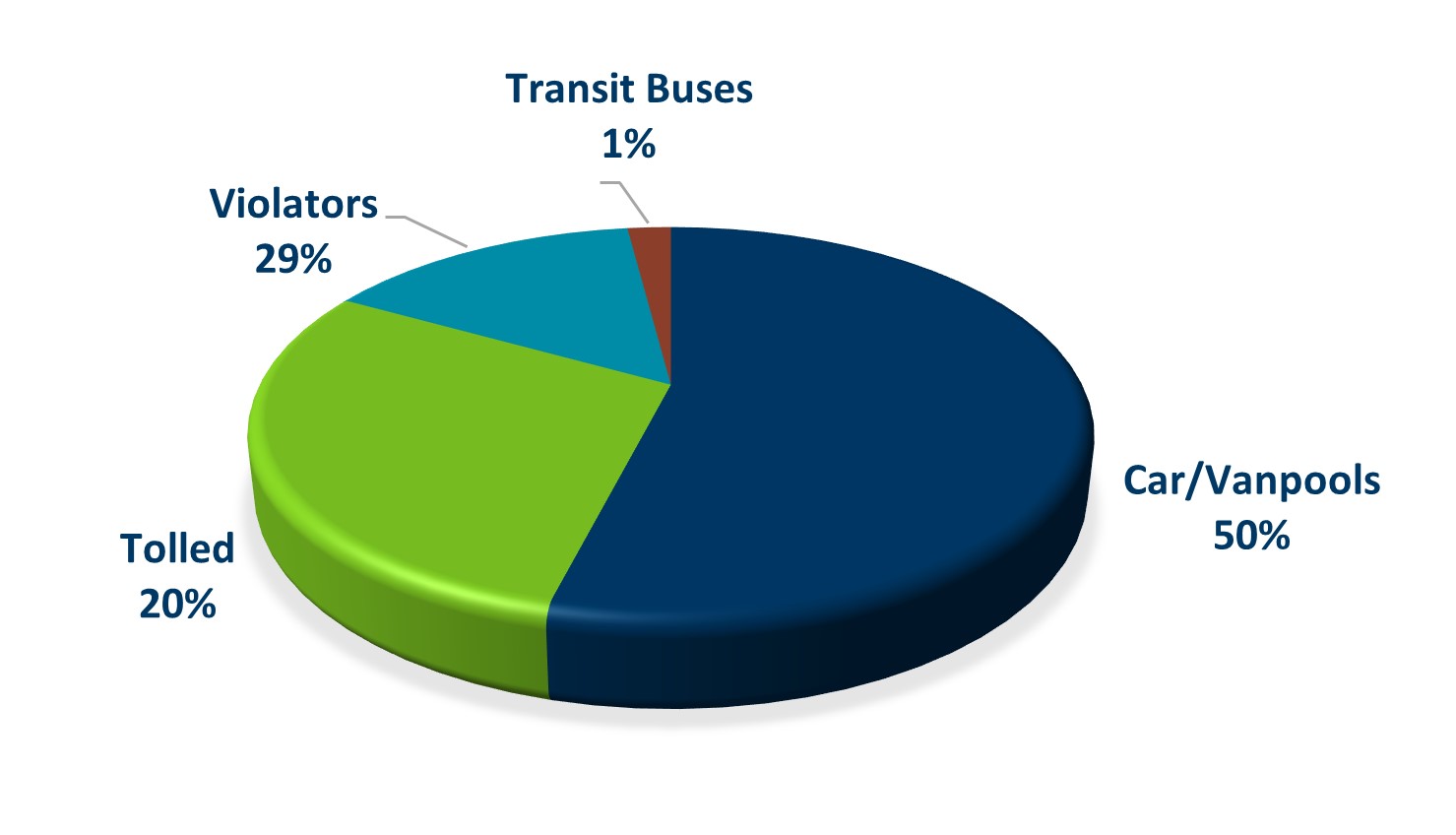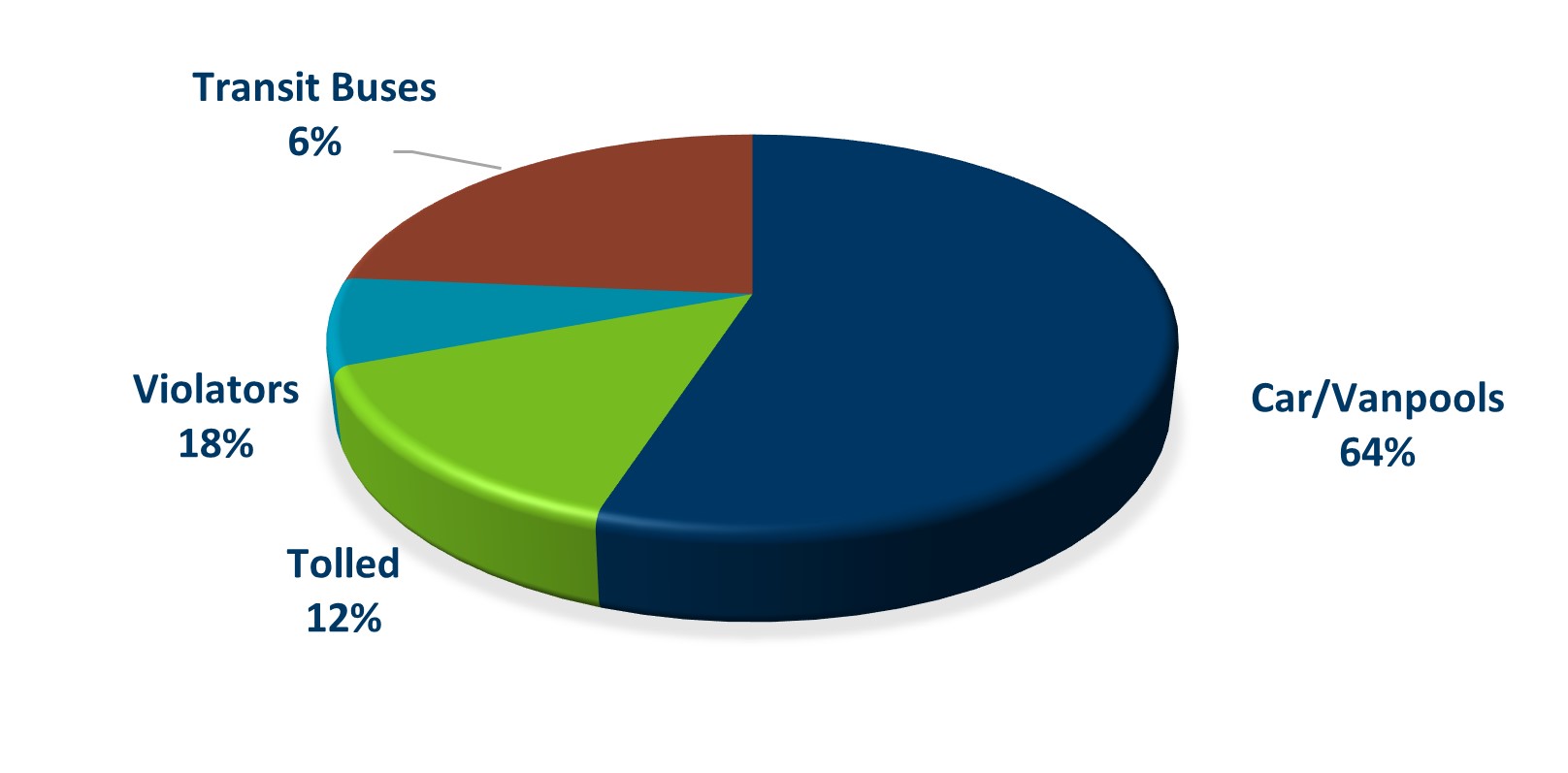Use and performance
E-ZPass Minnesota is a system of priced managed lanes. We manage how the traffic uses the lane during certain hours to improve traffic flow on busy highways. E-ZPass Minnesota provides a more reliable, less congested travel option during peak rush-hour periods by providing a dedicated lane that is free for HOV and requires a fee for single occupant vehicles. Outside of peak travel, the E-ZPass lane is free and open to all motorists—which is nearly 90% of the time. The goal is to improve the efficiency of a highway during busy commutes, not to generate revenue. The lanes have been in operation in Minnesota since 2005.
Benefits:
- Moves more people along busy highways
- Provides faster, more reliable travel times
- Improves transit service
- Increases transit ridership and carpooling
- Connects to other E-ZPass routes in the U.S.
During peak weekday hours, E-ZPass Minnesota is free for buses, motorcycles, and vehicles with two or more people including children and infants (HOV 2+). Solo motorists choose to use the lanes for a fee that varies between .25¢ and $8.00 depending on number of vehicles and speeds in the lane. The average fee in 2024 was $1.17 per trip. The lanes are free and can be used by all motorists before and after peak travel times.
E-ZPass use
E-ZPass moves more people. A single E-ZPass lane moves twice as many people as a regular lane during peak commuting times—in fact, 70% of the people using E-ZPass are carpooling or riding on buses.
Single occupant vehicles are 20% of the total vehicles in the lane but are only 12% of the people using the lanes.
The following charts show the percentages of vehicles and people moved on the E-ZPass system from 6-10 a.m. and 3-7 p.m.
Vehicles moved
|
People moved
|
E-ZPass performance
E-ZPass lanes provide a more reliable travel choice for all commuters. Federal laws require vehicles in the E-ZPass Express Lanes travel at speeds above 45 mph for 90% of the time or greater during peak travel times. Currently, vehicles in the E-ZPass lanes are traveling at speeds above 45 mph approximately 98% of the time.
E-ZPass lanes provide motorists a more predictable commute. During peak hours, one E-ZPass lane can carry two-three times more people than a general lane! General lanes are also prone to congestion which results in unreliable travel times.
E-ZPass Express Lanes allow transit, particularly express buses, to travel faster and safer during peak travel times which provides reliable trips and increases the number of people who ride on public transportation.
Travel time reliability

During busy morning and afternoon commutes, travel time in the general lanes is much less reliable than the E-ZPass lane. Commute times in the general lane can vary greatly by hour, day, day of the week, and seasonally, whereas the E-ZPass lane provides a relatively consistent and predictable trip.
Revenue and expenditures
By state statute (MS 160.93), toll revenue generated through E-ZPass must be used in the corridor from which it was generated and specifically for the construction, operations, and maintenance of the E-ZPass lane. The specific revenue use requirements for each corridor are:
I-394, I-35E, I-35W north metro and future corridors
Revenue must first repay the capital costs to construct E-ZPass lanes in the corridor; next to pay for E-ZPass operations and maintenance expenses; and finally divide any remaining revenue equally between MnDOT and the Metropolitan Council for highway and transit improvements in the corridor.
I-35W
Revenue must be used each year as follows:
- $1 million or 75 percent of the revenue (the lesser of the amounts) to pay for E-ZPass operations and maintenance expenses in the corridor.
- Next, transfer the remaining amount up to the amount above to the Metropolitan Council for bus transit improvements in the corridor including transit capital expenses.
- Divide all remaining revenue as follows:
- 25 percent to MnDOT for E-ZPass operating costs and for highway improvements in the corridor
- 75 percent to Metropolitan Council for bus transit improvements in the corridor including transit capital expenses
